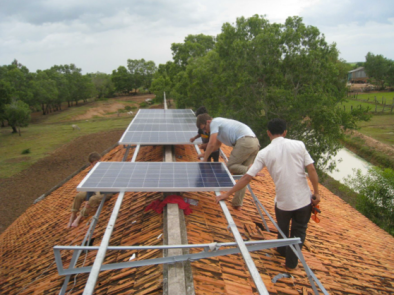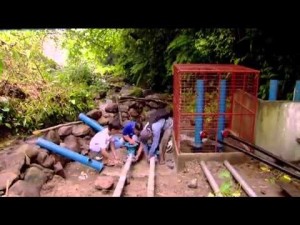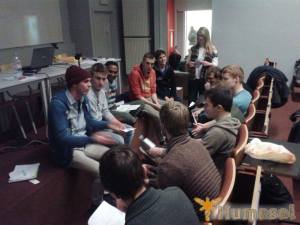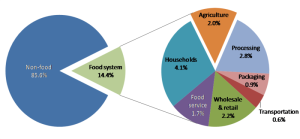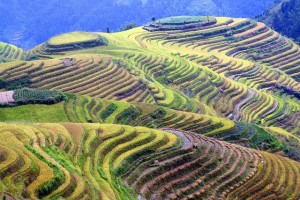For our thesis we are analysing and designing a hydraulic ram pump for a humanitarian organisation called Humasol. This pump allows low-cost water pumping in rural areas without an external energy source and is mainly used for irrigation or providing life stock of water. The hydram uses a physical phenomenon called the water hammer effect to create a pressure surge so that a small amount of water can be pumped each cycle. Humasol is a NGO that provides students projects in the South that cope with making renewable energy available all around the world. The organisation was founded seven years ago but is vastly expanding, providing now projects to over 25 engineering students.
Over eleven percent of all people in the world i.e. 800 million people have hunger and 750 million people lack access to clean water (World Hunger education service, 2015) (water.org, 2015). At the same time, there is enough unused fertile soil to feed about 750 million people (Chi & Diemer, 2002). By comparing these two numbers, someone could wonder why the unused fertile soils aren’t just used to feed those in need. Off course, reality seems to be somewhat harder. Infrastructures for using these soils are absent or insufficient, proper irrigation systems are unavailable and too expensive and there exists no social background in those communities to promote using these soils. But, these people are not alone on the planet. The other eighty-eight percent don’t have hunger and have no lack of water. These people could make sure that living on earth would be viable for everyone. Unfortunately, these people usually don’t have the knowledge to give aid and lack the knowledge for the answer to the problem.
However it would be difficult, it’s definitely not impossible. In this paper a sustainable solution is presented and an idea on how this problem could be solved in real life. In that way, a more general solution can be followed and the core of the problem can be solved by anyone who wants to help solving this problem because it can’t be solved alone. These are based on the four pillars of sustainability: the social, ethical, technical and economical aspect.
How can this problem be solved?
Half of the unused soils lies in Africa (Styslinger, 2015). Therefore, we should watch this continent closely and look at the advantages and disadvantages we can find there. Apart from the Sahara desert, a lot of height differences are visible, especially underneath the equator where a lot of poor countries lie based on the GDP (Van Hecke, Van Der Hallen, & Callemeyn, 2010). On these hills, a lot of water is available from the rivers and lakes. These are the perfect source to make agriculture in Africa possible. But how should we transport the water towards these fertile places. Most of the time the river runs in the valley and should be pumped up to reach the right places to make irrigation possible.
Since power sources like electricity and fuel are often expensive due to lack of transportation, other permanent ideas that don’t require an external energy supply should be looked upon. In the table below a short summary of solutions is presented compared with each other in investment cost, operation cost and cost over 10 years. The costs on 10 years are based upon investigations of the topic in China (Chi & Diemer, 2002).
| Investment cost | Operation cost | Yuan/m³/10 years | |
| Electric pump | Medium | High | 3 |
| Diesel pump | Medium | High | 3 |
| Floating pump | High | Low | 0,1 |
| Solar pump | Highest | Low | 30 |
| Wind pump | High | Low | 30 |
| Hydraulic ram pump | High | Low | 0,1 |
A ram pump needs specific conditions in terms of an initial head to be able to pump water. However when something needs to be pumped to a higher position and no high flow (necessary for floating pump) is available, the hydraulic ram pump is the optimal solution because it needs no external energy supply and can pump to as much as seventy times its original head (Tacke, 1988). At the same time, the polluting aspect of the ram pump is very limited. Apart from transporting the components to the right place together with the production of the ram components, which needs to be done with every pump, the hydraulic ram pump produces no CO2 equivalents. In comparison with the electric and diesel pump, the hydraulic ram pump is superior because of the lack of an energy supply, which makes it less polluting. Both a wind and solar pump produce more initial CO2 equivalents to produce. This effect will be smaller on the long term, but the cost is off course still a lot higher.
Another thing to think about is the structure to use the soils. Erosion is one of the things that could occur over time when the soils would just be cultivated without extra attention. About 1-2 % of the soils erode annually when they are cultivated (Chi & Diemer, 2002). A proper guidance for this problem is necessary here, because otherwise future generations are stuck with soils that are eroded. Therefore, maintaining the soils in the shape they have now, is something good to do. The easiest and nowadays most conventional way to stop soils from eroding, is terracing. Morgan introduced multiple ways to stop erosion from happening but concluded that terracing is the best solution when starting without a lot of resources (Morgan, 2005). However, it should be noted that this is only one of the things that should be looked upon. Producing power in a sustainable way should be another focus. Since the ram pump doesn’t need any external energy supply, creating irrigation systems that don’t interfere with the power production problem.
Sadly enough, the erosion doesn’t stop there. Rivers are still (minimally) polluted by the eroding soils. Therefore cleaning these waters should be a second main focus. While we are on this, waste water from industrial processes can be re utilized when it’s treated as well. These two things could be done by a slack/water separator and a hydraulically driven ram pump (EMS Industries, 2015). The separator is a simple rotating mechanism that pushes the slack to one side and the water to other one (Figure 2). The hydraulically driven ram pump designed by the company EMS can pump the slack to other places or pump heavily polluted water. These pumps have been tested and seem to be the best solution around (Figure 1). If both terracing and the treatment of polluted water are done properly, future generations can benefit and build on technologies that aren’t around today.
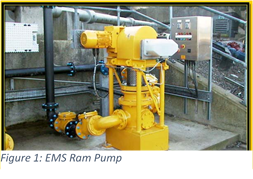
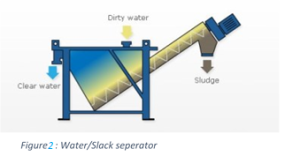
This whole idea is a beautiful concept but this paper with the technology by itself won’t make it happen. To realise it, some main social and economic points should be taken into consideration:What should be done as an extra effort?
- Money for solving this problem is scarce and widely divided over many NGO’s
- People to work on this problems are difficult to find
- The objective should be to make the aid finite and make sure the local people know the technologies behind it(Dambisa, 2010)
- The local mind-set in these countries is different and they don’t know how to benefit from it
- Failures happen but are too often kept quiet from the rest of the world
The solution to this problem can be found in an umbrella organisation that’s non-governmental. Nowadays, there are a lot of these small NGO’s but their scale remains limited. Examples of these kind of organisations are AFD (Academics for development) and Humasol. If a lot of these NGO’s can work together and work with a general plan, with the objective presented before, bigger budgets can be obtained, research can be shared and a marketing plan can be executed. Examples of these kind of organisations are “engineers without borders” and “Kom op tegen kanker”. The different NGO’s can now all cooperate together with the same objective but with a mutual budget and goal. In a way, you could call this a cooperation between different NGO’s.
With the marketing campaign, stronger interest will grow for helping these projects. Enough skilled people should come forward to design, build and teach about the installations. These people should be found at a certain point, which is one of the most difficult steps. Students should be highly recommended to participate in a developing project. The government can take steps in this, but the cooperation mentioned above can do this to. For students, exploring different cultures can be very interesting for their future lives. But realising something tangible will be an boost for a lot of students.
To be able to make the aid finite, several tasks should be distributed. All kind of talents are necessary and in this way almost all students can be involved. Local people should be taught about the installation so they can maintain them their selves, and who can teach better than teachers (teaching students). Engineers can work out the technical plans while technicians execute them. Social plans can be made by social workers and the marketing plan of the cooperation by marketing students. In this way, not only experience, which students often lack, but also a cultural mind-set could be obtained together with the main objective install all the irrigation systems.
But these people are not the only ones who should change their mind-set. The local people should do the same. Nowadays they often lack the knowledge of these technologies but once they’re installed the technology should be maintained. Local companies could be begun for the maintenance and later build-up of new products locally. Again, the money source can then be limited and at the end they can provide for themselves, which is essentially the main goal of the aid program. This can be taught during the lessons provided.
The last thing is to locate failures in projects. Again, if the scale is big enough a community with the involved (student) engineers, technicians, social workers and teachers could be built. These could then make an open source network like David Damberger to alert other people from the possible failures and what can be done to prevent them (Damberger, 2011). If there are enough people involved, they can cooperate to fight future failures together. But not only failures should be shared on this platform, successful projects can be shared as well where future installations can be based upon. One NGO would be too small to do this, but if a whole community of all kinds of people can work together a lot is possible and can be obtained.
References
Chi, P. M., & Diemer, P. (2002). Hydraulic Ram Handbook. Opgehaald van Borda: http://www.borda-net.org/fileadmin/borda-net/Knowledge/Implementation%20Manuals/064%2520BORDA_HydRam-Handbook.pdf
Damberger, D. (2011). Learning from failure. Calgary, Canada.
Dambisa, M. (2010). Dead Aid. New york: Douglas & McIntyre.
EMS Industries. (2015, February 15). EMS Industries. Opgehaald van emsgb: http://www.emsgb.com/index.html
Morgan, R. (2005). Soil Erosion And Corosion. Malden, USA: Blackwell Science Ltd.
Styslinger, M. (2015, 4 8). The Fertile Continent: Agriculture’s Final Frontier. Opgehaald van Blogs Worldwatch: http://blogs.worldwatch.org/nourishingtheplanet/the-fertile-continent-agriculture%E2%80%99s-final-frontier/
Tacke, J. (1988). Hydraulic Rams Comparative investigation. Report 88-1, Delft University of Technology, B1-B6.
Van Hecke, E., Van Der Hallen, D., & Callemeyn, J. (2010). Wolters Algemene Wereldatlas. Groningen: Wolters Plantyn.
water.org. (2015, 4 10). Water facts: Water. Opgehaald van Water : http://water.org/water-crisis/water-facts/water/
World Hunger education service. (2015, 4 14). 2015 World Hunger and Poverty Facts and Statistics. Opgehaald van World Hunger: http://www.worldhunger.org/articles/Learn/world%20hunger%20facts%202002.htm#What_are_the_causes_of_hunger

